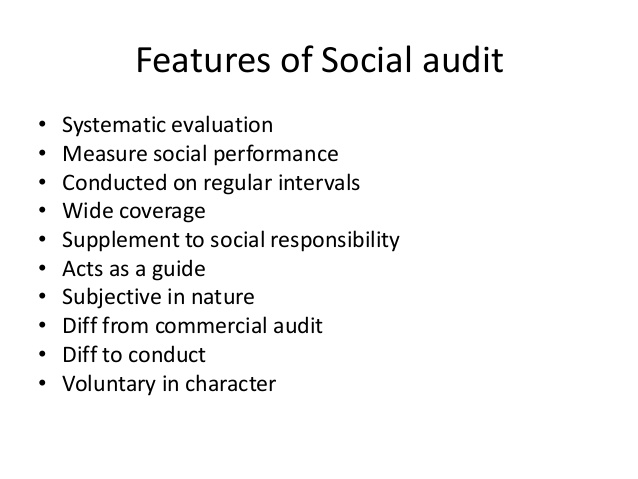Contents:


Diabetic Foodie was founded by Shelby Kinnaird in 2010. Shelby has lived with type 2 diabetes since 1999 and wanted to create a platform to share her love for healthy, great-tasting food. In 2020, she decided to pursue her passions for cooking, teaching, and advocacy in a different way and handed over the reins of Diabetic Foodie to the Diabetes Strong team. The first group of easy snacks listed below are things you can grab and go, no cooking required. The other low-carb snacks can be made when you have more time. OK, we get it—you see “seaweed sheets” and you’re tempted to scroll past.
We will continue to add to Carb Corner throughout the year. Carbohydrate counting, understanding serving sizes, recipes, snacks, what to eat in a restaurant and menu ideas. Premium organic seaweed, roasted to crisp perfection with organic sunflower oil, seasoned with just a pinch of sea salt. Three simple ingredients come together to create one delicious low-carb snack. Keto Jerky Collectionis our go-to collection when looking for low-carb snacks to buy. All jerky flavors and meat sticks in this collection are entirely sugar-free and carb-free–as in zero carbs per package.
Yogurt and Cucumbers
Mixing up a homemade trail mix using a handful of pistachios and whole-grain cereal is an easy way to cure afternoon cravings and keep them from coming back, says Lakatos. Just steer clear of the butter-drenched, super-salty movie theater popcorn and pop your own kernels, says Schapiro. You can even get fancy by giving your homemade popcorn a spritz of olive oil and a dash of pink Himalayan salt, she says. Kidney beans are a good source of many vitamins, minerals, and plant compounds.

Simply spread your oat cakes with peanut butter and slices of banana, and I like adding a sprinkle of cinnamon or a drizzle of honey. This banana bread is boosted with protein powder making it great both pre and post workout. I’ve always eaten carbs while reducing my body fat percentage, and they’ve helped me reach my fitness goals. They’re also a great source of fiber and some vitamins and minerals such as B vitamins, she said.
While low How to Calculate Marginal Cost diets can be beneficial for some people, there’s no reason to avoid high carb foods altogether. If you’re ready to stock up your fridge and pantry, you can find some of Shapiro’s favorite low-carb snacks below. With Nutrisense, you’ll be able to track your blood glucose levels over time using a CGM, so you can make lifestyle choices that support healthy living.
Healthy Snacks for Adults Who Need to Refuel in 2023
Most are shelf stable, which can make them a convenient treat to reach for when hunger strikes between meals. The carbs counted when adhering to low carb eating are “net carbs” which is a term we will use to define low carb snacks later on. You can find out the net carbs of any particular food by subtracting the grams of fiber from the total carbohydrates on the nutrition facts label. Your body needs carbohydrates for optimal performance and recovery during high-intensity and endurance training. Delicious and rich you can add it to your smoothies, shakes, or mix with water, for a rich and tasty treat.
- Sunflower seeds are a tasty keto snack for those looking to consume all natural food products.
- With just one net carb each, Low Carb Maven’s peanut butter balls will come to the rescue any time you experience an inconvenient snack attack.
- However, pretzels are also high in sodium, which, if consumed in excess, can raise blood pressure and your risk for heart disease.
- A summer citrus salad recipe from Vanessa Rissetto, registered dietitian.
- Vegetables with a long shelf life include carrots, bell peppers, and turnips.
These wonderful salty treats can be served as a snack or an appetizer. Serve them on top of your favorite vegetables and leafy greens and you’ll have a delicious and filling salad. Eggs are a great low carb option.4 Keep a few hard-boiled eggs ready for when you need a perfect snack. Oat cakes are a great source of slow-release energy and can be topped with savory or sweet toppings.
You should be getting more of these carbs all day long.
The amount of carbs that you should allocate for snacks really depends on your total daily carb count. With that said, it’s a good idea to keep any snacks under 5 to 10 grams of carbs so that you don’t make it to dinner already having spent your “carb budget.” Fat and protein are more satiety than carbs, and if you’re snacking because you’re actually hungry, snacking on carbs will just contribute to more carb cravings. So stick with snacks that fall in those three categories. If you came to this video wanting the low-carb snacks and now realize maybe you need some emotional eating work, too, let me know in the comments! For that I have a few tips and will make a video on steps to stop emotional eating in the future.
25 Low-Carb Snacks That Are Healthy & Keto-Friendly … – mindbodygreen
25 Low-Carb Snacks That Are Healthy & Keto-Friendly ….
Posted: Wed, 30 Nov 2022 08:00:00 GMT [source]
Green and darker colored vegetables are great for nutrient content but may not fit your high-carb foods low in fat that you’re looking for in this article. Other vegetables with a higher carb content are carrots, bell peppers, eggplant, and brussels sprouts. Nuts and nut butter are an excellent high-calorie, low-carb snack if you’re having a busy day — not just for those on a keto diet.
The Bottom Line on Low Carb Sweet Snacks
One-half cup of mashed, cooked sweet potatoes with their skin on contains about 20.7 grams of carbs, which consists of starch, sugar, and fiber . A 1-cup (81-gram) serving contains 54 grams of carbs, including 8 grams of fiber. They are particularly high in a specific type of fiber called oat beta glucan . Yes, it’s true that processed foods high in sugar and refined grains typically lack important vitamins and minerals.
The Essential Whole Grain Foods You Need in Your Diet – EatingWell
The Essential Whole Grain Foods You Need in Your Diet.
Posted: Thu, 13 Apr 2023 07:00:00 GMT [source]
One of the best time-saving breakfasts of all time, hands down, and also a great snack. You’ve probably tried to reach your goals in the past, but in today’s world, it can be hard to be healthy. That said, we know that everyone wants a snack once in a while. So here are some great options and a few common mistakes to avoid. Bake at 180°C/350°F for about 8 minutes — don’t overbake or they’ll be dry. Mix together the banana, milk, vanilla extract, apple cider vinegar, and honey in the food processor .
Blood-Glucose Friendly Japanese Eggplant Recipes
If you’re looking for an easy, high-protein snack, beef jerky is an excellent option, with about nine grams of protein per serving. A handful or two of popcorn is not going to sabotage your low-carb or keto diet; however, if we are going to place popcorn in one macronutrient category, it’s carbs. Otherwise, stay away from popcorn altogether if you’re trying to stick to a ketogenic diet. Simply blend around 1 cup ice, ¼ cup full-fat coconut milk , 1 scoop of whey protein, a pinch of sea salt, and non-glycemic sweetener of choice . Each bag of Schoolyard Snacks packs 14 grams of protein, and just 1 gram of carbohydrates. I know, you’re probably wondering what whacky ingredients they contain, and the answer is none!
Data for the curated food lists comes from the USDA Food Data Central Repository. Swolverine is an athlete and active lifestyle brand. Made for the elite athlete and the strong-willed our products were designed to fuel your athletic performance. And whether you want to fill your snack stash or you just want to treat yourself, try out Bolt Market. Sometimes you just need to munch to keep your brain awake when driving for a long time! You don’t have to worry too much about baby carrots going bad- and they’re so easy to find at any store.
Despite the prevalence of heart disease, hypertension, and hypercholesterolemia, cardiovascular function remains an o… Creatine HMB Enhance strength, increase endurance, decrease fat mass, and prevent lean muscle loss. Reference Dietary Intake (%RDI) -The reference dietary intake is similar to the recommended daily allowance, and is specific to age and gender. Adequate Intake (%AI) – Sets a target for Omega 3 and Omega 6 fats. It represents a number to ensure adequacy but lacks the same level of evidence as the Reference Dietary Intake.

Bake for about 30 minutes until a skewer inserted into the middle comes out almost but not quite clean. Leave to cool on a rack for at least 30 minutes before removing from the tin. These examples have a targeted amount of carbs balanced with protein and fat. The protein and fat can extend the energy to help keep you satisfied longer. (https://www.sullivansusa.net/)
- You know you won’t be able to leave that study session or lecture just because you want to eat.
- There is a very real chance of them being taken to the extreme, which can have negative health effects.
- While the sweet recipes below are low carb, they are also very rewarding and tempting.7 They may encourage eating when not hungry, and that can slow your weight loss.
- All our evidence-based health guides are written or reviewed by medical doctors who are experts on the topic.
Chia puddingsare a great snack loaded with fiber and some protein. You can get creative with your puddings by adding some nuts and seeds, sugar-free chocolate chips, a few berries, or shredded coconut. One of the benefits of a keto or low-carb diet is that it can help you feel more satisfied with your meals, so you might find yourself snacking less. However, snacks are always important to have on hand—especially for those with hypoglycemia, or low blood sugar. Whether you’re a cool ranch fan, nacho cheese, or spicy salsa fan, Hilo has got you covered! These chips are made with almond flour, packed with 9 grams of protein, and just 3g net carbs per serving.
9 Foods That Are Naturally High in Digestive Enzymes – EatingWell
9 Foods That Are Naturally High in Digestive Enzymes.
Posted: Thu, 13 Apr 2023 07:00:00 GMT [source]
Small, more frequent meals and snacks may help you manage heartburn. Our website services, content, and products are for informational purposes only. Healthline Media does not provide medical advice, diagnosis, or treatment. A summer citrus salad recipe from Vanessa Rissetto, registered dietitian.
For a low-carb but nutrient-rich snack, slice up an avocado, sprinkle with salt and pepper, or scoop it right out of the skin. When you find yourself feeling peckish, reach for one of these keto-approved, low-carbsnacks that can satisfy any craving in a healthier way. We’ve compiled a list of easy to make and delicious low-carb snacks for any type of snacker.
Dried fruit is an excellent source of readily available carbohydrates, as well as a highly concentrated source of vitamins, minerals, and dietary fiber. A 1/4-cup serving of dried plums, or prunes, supplies about 28 grams of carbohydrates. It’s a great source of vitamin C as well as iodine, magnesium, and zinc. With 25 calories per serving, and one gram of carbohydrates, this seaweed pack is a tasty low-carb teat for light snacking. The most filling low-carb snacks are foods naturally high in protein and fat. Think of snacks like nut butters, meat, raw nuts, and other high calorie, nutrient dense foods.
